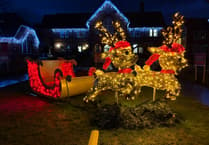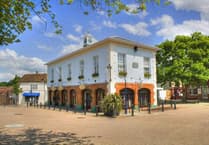Pupils from the Eggar’s School eco-committee joined Alton Town Council to plant 40 disease resistant elm trees in Anstey Park on January 28.
They were not deterred by heavy rain, icy winds or mud, whether it was because of their love of trees and the environment or that they were missing mathematics.
They planted each tree with enthusiasm and will be able to watch them grow over the years, taking pride in the knowledge that they have not only improved Anstey Park for wildlife and nature but also taken part in the Hampshire Forest Partnership’s disease resistant elm tree trial.
The English countryside was once dominated by elms, stately giants that watched over our landscape, providing a beauty of form and grace unique to these glorious trees.
But since the 1960s they have been ravaged by Dutch elm disease, which was accidentally introduced to Europe in the early 20th century.
The disease is caused by a pathogenic microfungus carried by two species of elm bark beetle and has killed nearly all the mature elms in Britain, an estimated toll of between 60 million and 100 million trees.
The elm was historically one of the six major trees within British woodlands, widely used in landscaping, and it hosts more than 80 species of invertebrate, including several rare moths and the now endangered white-letter hairstreak butterfly.
The elms planted in Anstey Park were donated by the Hampshire Forest Partnership, which is trialling several different elm varieties developed by specialised breeding programmes.
Initial findings suggest these cultivars can resist the disease and establish well. The planting locations are being mapped to help record future growth patterns, ability to resist the disease and how well the elms support biodiversity and nature recovery.
‘Re-elming’ Hampshire will support wildlife relying on this once ubiquitous tree. For more information visit www.hants.gov.uk/landplanningandenvironment/hampshireforestpartnership





Comments
This article has no comments yet. Be the first to leave a comment.